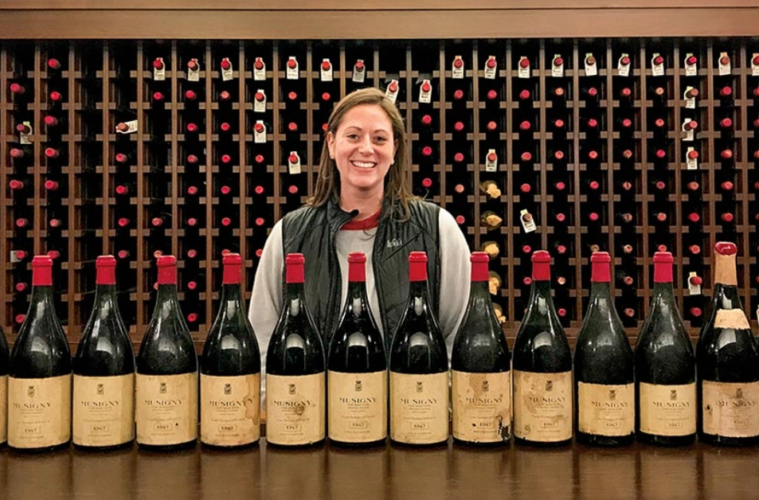Working in the wine auction business, Julia Gilbert ’05 Murray learns about bottles that go as far back as WWII.
In 2007, while working at Zachys Wine Auction in White Plains, N.Y., Julia Gilbert ’05 Murray auctioned off the wine of Swedish physician Nils Stormby, whose collection was considered among the best in the world. He’d collected 5,500 bottles of rare Bordeaux, many from European aristocrats who had bought the wines directly from the winemakers in the 1800s and stored them in their original wooden cases. The collection sold to 50 buyers for $4,560,000.
After the auction, one of the buyers invited Murray to dinner, where they shared a bottle of 1929 Chateau d’Yquem, a vintage with “a kind of an ethos around it,” Murray says. “That vintage is legendary … think about its historical context, about what was happening in Europe — in the world — at that time. That bottle survived World War II.”
It was Murray’s passion for European history, language, and culture that led her to wine. She majored in Italian studies and classical studies at Colgate and studied abroad in Venice and Rome. After graduation, Murray sought a career that would keep her engaged with Europe, so she applied for the position of wine specialist assistant at Zachys. Unlike larger auction houses like Sotheby’s and Christie’s that buy and sell a variety of pieces, Zachys specializes in wine and spirits.
Clients number only a few thousand worldwide, but wine auctions bring in more than $500 million a year. While some bottles, like Stormby’s, sell for thousands (five bottles of a rare 1921 vintage sold for $11,000 to $15,000 each), bottles at most auctions begin at a modest price point, around $30.
“You don’t have to show up in a suit and tie to a fine restaurant to bid on wine,” Murray says, although Zachys does host auctions at upscale venues. “We have a lot of ways to buy wine, including livestream auctions you can watch from home and eBay-style auctions you can participate in on your phone.” Auctions do attract some celebrities, but clients are more often everyday wine lovers, as well as buyers for restaurants and shops. It’s an eclectic clientele unified by a love for wine, and for sharing the experience of drinking it. “Most people don’t just open a bottle and drink it silently,” Murray says. “They post notes online, they join a wine group that goes out to dinner and opens wines on a certain theme.”
If an infatuation with Europe drew Murray to wine, an outlet for sharing her enthusiasm is what keeps her in the auction business.
Now managing director, auction, Murray leads a team of 50 employees who network with potential buyers and sellers throughout North America, Europe, and Asia. She also oversees the auction budget and operations, including customer service and logistics, and the process of examining and delivering collections. In addition to checking each bottle to ensure that it has been stored correctly (55 degrees, high level of humidity, out of direct sunlight), they also scrutinize each bottle for fraud, which is rampant in the wine world.
It’s a lot of work, but auctions are also fun, says Murray. “You put months of preparation into it, find the collections, examine the wines, build the catalog, present it to the world, find the buyers, and then the auction happens and there’s so much emotion involved.”
As Stormby wrote in his auction’s program book introduction: “The evening before my 5,500 wonderful bottles will be packed and shipped to Zachys in New York, I take a last tour in the cellar. Not to weep, but feeling happy once more to invoke all of the personal memories [that] so many of the bottles carry.”

